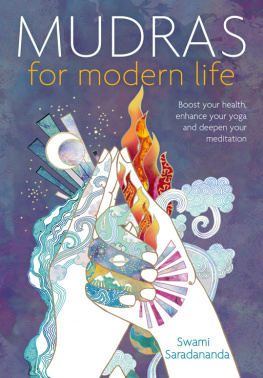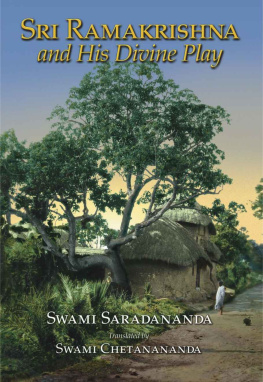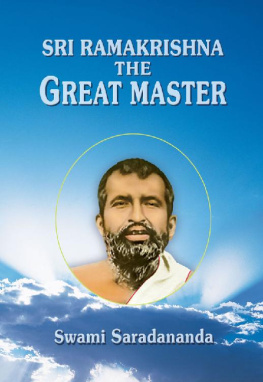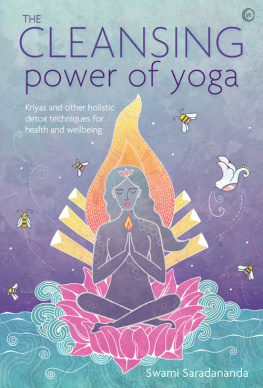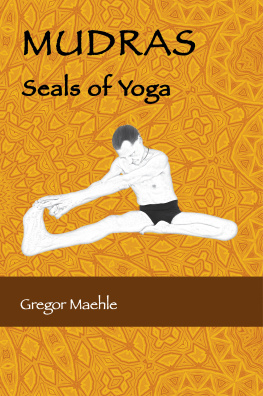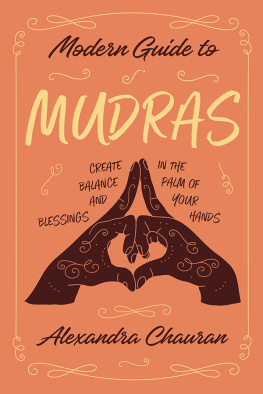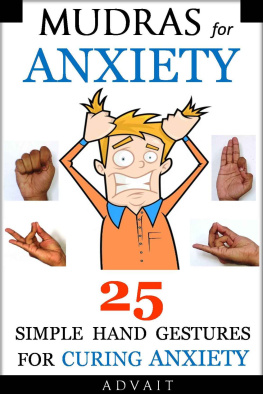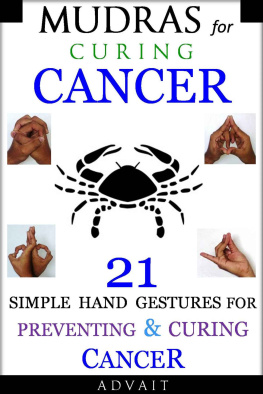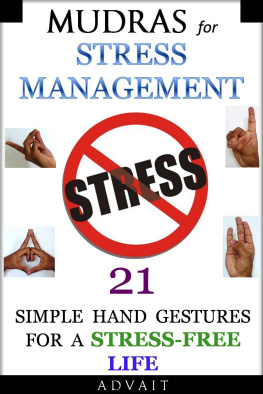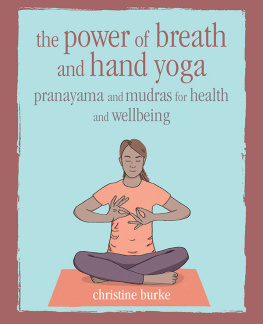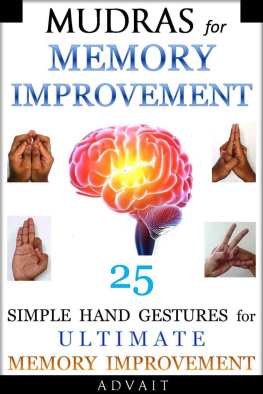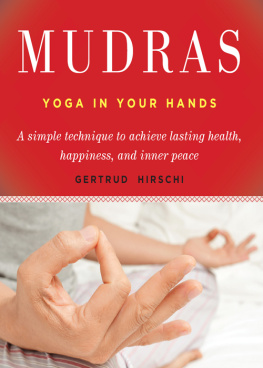
Mudras for Modern Life
Swami Saradananda
First published in the UK and USA in 2015 by
Watkins, an imprint of Watkins Media Limited
19 Cecil Court
London WC2N 4EZ
Copyright Watkins Media Limited 2015 Text copyright Swami Saradananda 2015 Artwork copyright Hannah Davies 2015 Photography copyright Watkins Media Limited 2015
For copyright of other photographs see which is to be regarded as an extension of this copyright
The right of Swami Saradananda to be identified as the Author of this text has been asserted in accordance with the Copyright, Designs and Patents Act of 1988.
All rights reserved. No part of this book may be reproduced in any form or by any electronic or mechanical means, including information storage and retrieval systems, without permission in writing from the publisher, except by a reviewer who may quote brief passages in a review.
Development Editor: Kelly Thompson
Senior Editor: Fiona Robertson
Editor: Susannah Marriott
Design and Art Direction: Georgina Hewitt
Picture Research: Jennifer Veall
Production: Uzma Taj
Commissioned Photography: Christina Wilson
Commissioned Artwork: Hannah Davies
A CIP record for this book is available from the British Library
ISBN: 978-1-78028-998-4
10 9 8 7 6 5 4 3 2 1
Typeset in Agenda
Colour reproduction by XY Digital
Printed in China
Publishers note: The information in this book is not intended as a substitute for professional medical advice and treatment. If you are pregnant or are suffering from any medical conditions or health problems, it is recommended that you consult a medical professional before following any of the advice or practice suggested in this book. Watkins Media Limited, or any other persons who have been involved in working on this publication, cannot accept responsibility for any injuries or damage incurred as a result of following the information, exercises or therapeutic techniques contained in this book.
If you are taking medication, please do not stop taking it when you begin to work with mudras and consult your healthcare professional if you plan to stop or alter your medication. If you spend most of your day with your hands on a computer keyboard, you may find some of the mudras, such as Mandala Mudra (see ), may be difficult or even painful to hold if you suffer from repetitive stress injuries, rheumatoid arthritis or carpal tunnel syndrome. Discontinue any mudra that causes pain, soreness or aggravates symptoms.
www.watkinspublishing.com
DEDICATION
I dedicate this book to the many students who have inspired and goaded me to look more deeply and to go further in both my own personal practice and in my teaching.
OM sa-ha naa-va-va-too
Sa-ha nau bhun-ak-too
Sa-ha veer-yam ka-ra-vaa-va-hai
Tay-jas-ve-naa-va-dhee-tamas-too
Maa vid-vi shaa-va-hai
OM shanti shanti shanti
Shanti Mantra, Katha Upanishad
OM. May the Divine Consciousness protect us as we play our parts as teacher and students.
May we be nourished with knowledge as we work together with vigour to understand the true meaning of the teachings.
May our learning be brilliant as we walk the path together harmoniously.
May we find new ways of communication and not quarrel with each other OM, peace, peace, peace.

CONTENTS
1. Hand Health and Wellbeing:
Increasing flexibility and reducing stress
2. Fire Mudras:
Boosting inner strength and self-esteem
THUMB (SOLAR PLEXUS CHAKRA)
3. Air Mudras:
Encouraging freedom, joy and stress relief
INDEX FINGER (HEART CHAKRA)
4. Ether Mudras:
Enhancing inner peace, self-expression and creativity
MIDDLE FINGER (THROAT CHAKRA)
5. Earth Mudras:
Encouraging stability and grounding
RING FINGER (ROOT CHAKRA)
6. Water Mudras:
Enhancing health and equipping you to move forward
LITTLE FINGER (SACRAL CHAKRA)
7. Mind Mudras:
Increasing concentration and clarity
PALM OF THE HAND (THIRD EYE)
8. Mudra Routines:
Building optimal wellbeing
INTRODUCTION

I welcome you to this book with a hand gesture of greeting, known in the Indian tradition as Namaste this translates as my essence greets your essence. This book is all about such mudras: hand gestures used to strengthen and purify mind, body and psyche by ensuring the free flow of natural healing energy, or prana, around your body to bring about radiant health and inner peace.
Hand gestures are used in many meditation traditions and are instruments of healing in a number of therapeutic systems. These include reflexology (massage using reflex points on the hands and feet), kinesiology (muscle-testing and natural healing techniques) as well as Indias traditional system of healing, Ayurveda. This book is based mainly on the Indian use of mudras: these simple yet powerful gestures are also an essential practice in hatha yoga and Indian dance, art and ritual. However, people have been depicted making similar hand gestures across the globe and throughout history: on Egyptian pyramids, Sumerian tablets and Mayan statues, in Hebrew inscriptions and Classical art.
Unlike yoga postures and breathing exercises, which are best learned from a teacher, mudras are easy to pick up and totally safe to practise by yourself. Absolutely anyone can benefit, from children with learning disabilities to older people with limited movement. If you have little spare time, mudras make the perfect form of exercise: you can practise while waiting for a bus, taking a break from the computer or watching TV.
Mudras are so valuable because they enhance overall wellbeing and allow you to tap into hidden energy reserves. Practice brings physical benefits, such as increased mobility and balance, and mental benefits, such as improved concentration. Emotionally, mudras encourage forgiveness and compassion. As yoga and meditation tools, they develop deep calm and inner peace. This book offers practical techniques to achieve all this and all you need is your hands.
HOW I DISCOVERED MUDRAS
Through my experimentation, observation and extensive teaching of yoga, Ive found that the body is a powerful antenna that is continually receiving and transmitting the subtle energy known as prana.
Most people think of hatha yoga as physical exercises: asanas. But it has developed many other techniques for channelling prana efficiently and effectively. There are breathing exercises (pranayama), cleansing exercises (kriyas), energy locks (bandhas) and seals (mudras), as well as meditation and ethical teachings. Hatha yoga begins with the physical body, but with practice you become aware of a more subtle movement of energy that is not physical in nature.
As I got more deeply into my asana practice, I became aware that I was doing something more than just moving my body. Often I felt as though my movement was just a flow of energy. As I became aware of the prana, I started to find ways to direct and seal it into specific channels. This was the start of my work with mudras, which enabled me to fine-tune and intensify many of the benefits of my asana practice.

